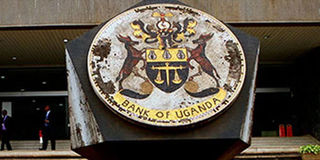High interest rates: Are banks losing the battle?

lthough BoU has steadily reduced the Central Bank Rate (CBR) , commercial banks have not responded that way. PHOTO/FILE
What you need to know:
The issue: Interest rate
Our view: Economists argue that the request to reduce loan prices will be difficult to implement unless the price setters take the lead in lowering the rate.
Interest rates for commercial banks have risen to 20 per cent in the quarter that ended in August, up from 18 per cent in May.
Bank of Uganda (BoU) has also maintained its Central Bank Rate (CBR) at 7 per cent due to the weak economic activity in the country as a result of the Covid-19 pandemic.
The implications of this pandemic on the borrowers’ ability to pay will lead to some previously performing loan facilities slipping into the non-performing loan category.
Much as BoU wrote to commercial banks in July asking them to reduce interest rates on the ground that the CBR - the key lending rate - had reduced to 8 per cent in April and 7 per cent in June, commercial banks only reduced these rates to 17.7 per cent in April. But in May, the interest rates rose to 18.9 per cent before climbing to 20 per cent.
Although BoU has steadily reduced the CBR, commercial banks have not responded that way with several consistently pricing their interest rates way above the industry rate.
But this also reflects several structural challenges to adjustments in lending rates as banks struggle with some customers who have defaulted on their loan repayments.
High interest rates are a true reflection of the market risk. A BoU report shows that non-performing loans (NPLs) rose to 5.8 per cent in June up from 5.4 per cent in March and 3.8 per cent in June 2019.
The trade and real estate sectors took the biggest hit with about 50 per cent of restructured loans.
Rising NPLs will eventually eat into the banks’ profitability considering that most of them use part of that income to cover bad debts.
Commercial banks’ compliance is also largely affected by Uganda’s banking market structure, which is dominated by few players.
Currently, you will find that the top six banks control 60 per cent of the entire industry, meaning these, in a way, set the price of lending and influence the flow of liquidity in the banking system.
In this case, economists argue that the request to reduce loan prices will be difficult to implement unless the price setters take the lead in lowering the rate.
Most businesses have closed due to the slowdown of the economy, which has affected their cash flows and loan repayment schedules. NPLs are expected to increase if borrowers are still distressed and unable to service their loans as the pandemic takes its toll.




